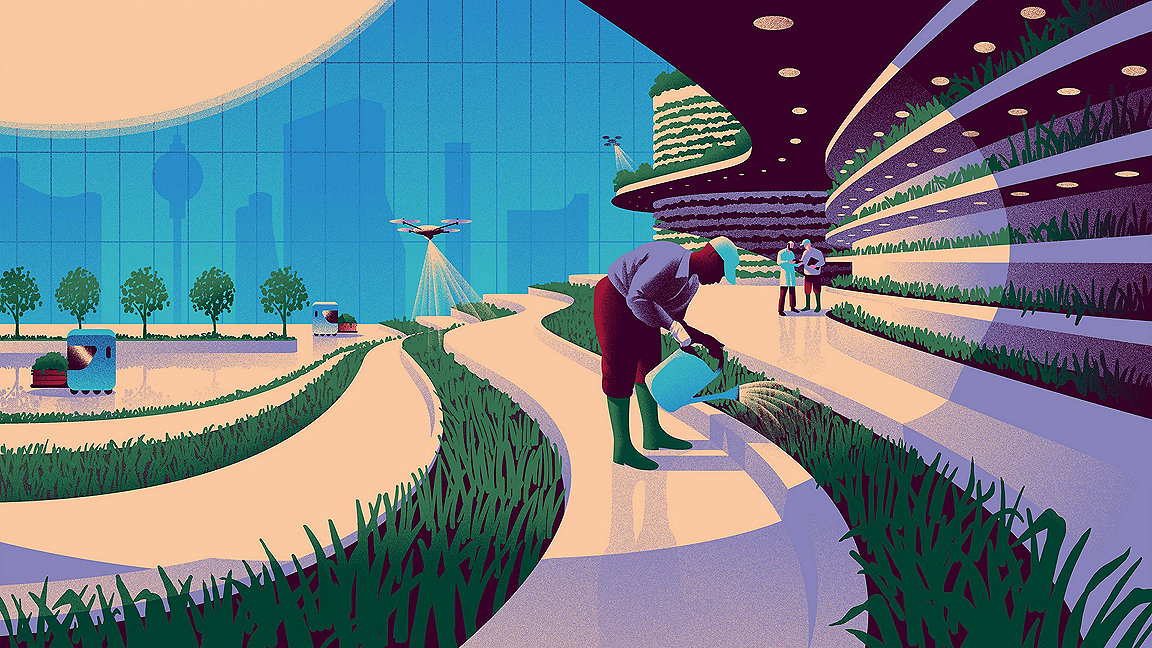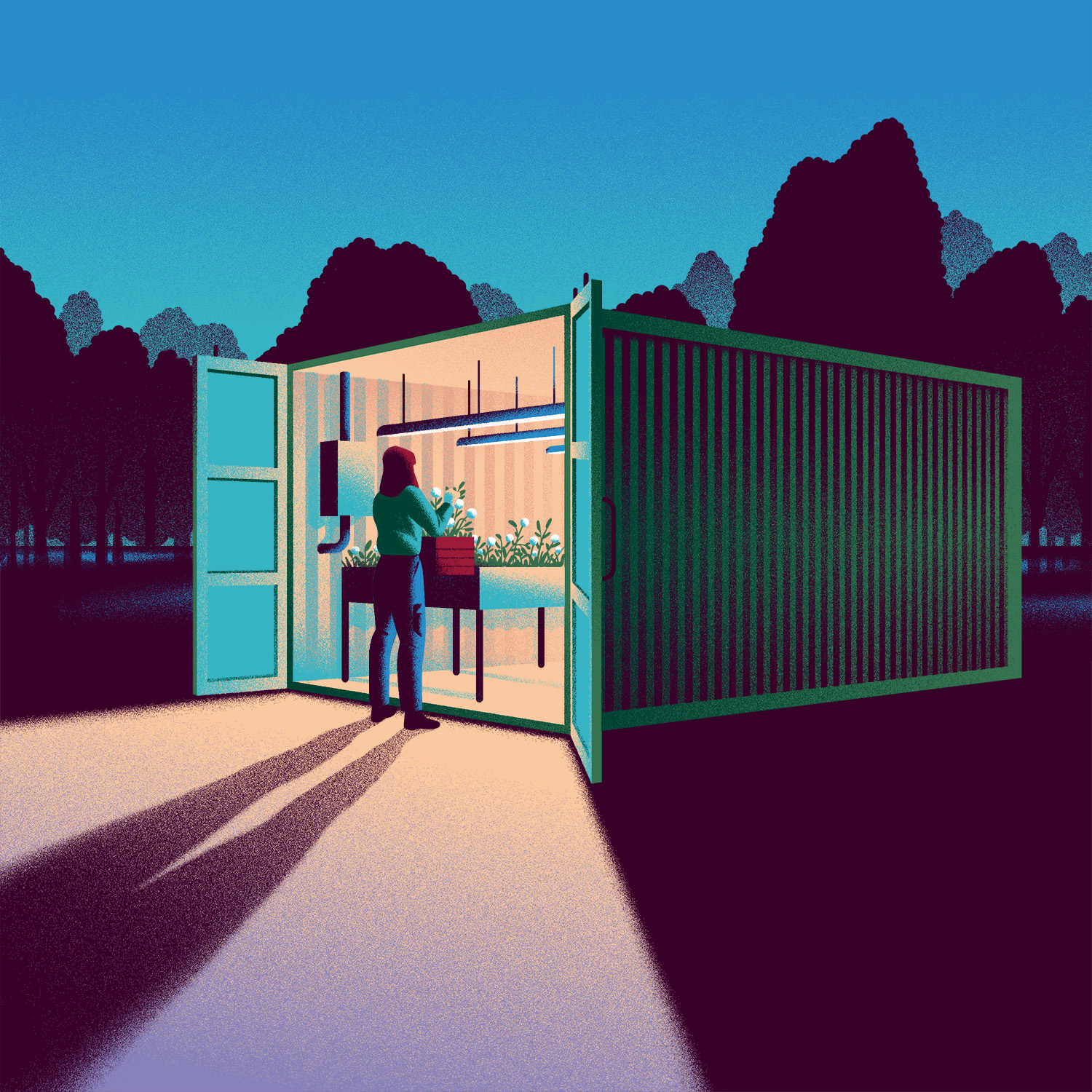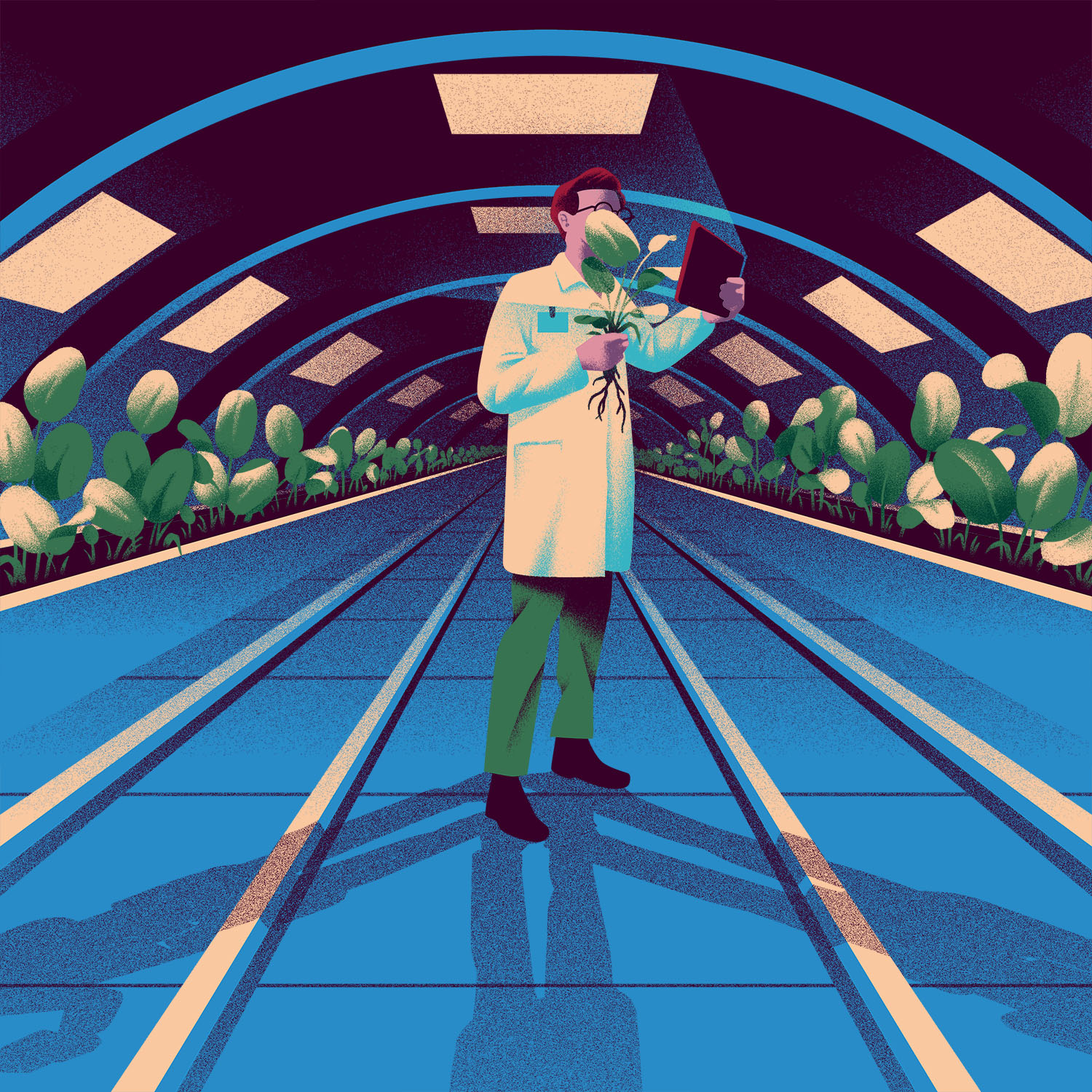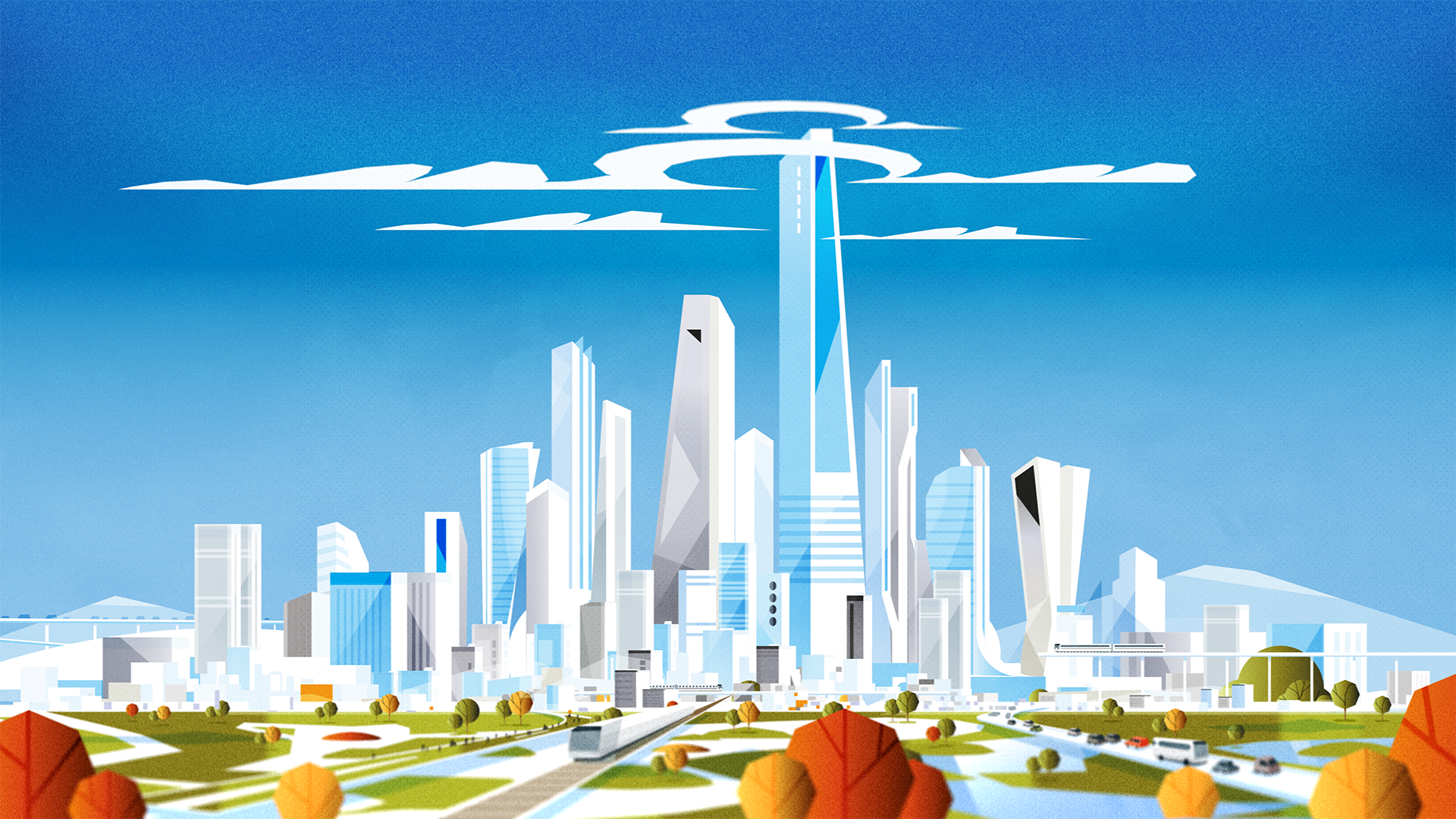
Illustration by Michele Marconi / Synergy Art
Cities were once planned around food needs, but the rise of industrial-scale farming and global supply chains has largely separated agricultural production from centres of habitation and consumers.
Pressures on resources linked to climate change and expanding populations are resetting the agenda for food production and distribution. Many municipalities are now exploring more sustainable approaches that harness existing infrastructure, buildings and the spaces in-between for urban farming.
Municipal land comes at a premium, but basements, rooftops or building cores often have limited use beyond their structural function, so exploiting them for urban agriculture could open up new opportunities for real estate value.
“In a post-pandemic world where people are not going back to work, offices are empty and the booming online market has reduced demand for physical retail space,” says Clare Brass, director of the circular economy innovation consultancy Department 22. “We've got lots of empty space that are often ideal to grow plants or mushrooms, or farm insects, which only require artificial light.”
Beyond the economic factors, proximity to nature and greenery has been shown to improve human health and wellbeing, increasing social value in congested cities. Urban farming isn’t a new idea, but innovators in the field are experimenting with new technologies and business models and expanding the scope and scale of what green can mean in a modern metropolis.
Limited space and expensive rents in cities is creating demand for containerised hydroponic farms, temporary structures that will squeeze into existing spaces, such as car parks or back lots.
Some municipalities are taking things to the next level to respond to factors such as climate change, to feed expanding populations and become market leaders in the associated technology.
Feeding large populations
Shanghai, Singapore, and Dubai are all aiming to become centres for vertical farming and investing heavily in the research and infrastructure needed to make it happen. Singapore has set a target to produce 30% of its own food by 2030 (up from 10% at present) with urban farms on carpark rooftops, reused outdoor spaces and retrofitted buildings all expected to play a role, backed by generous government grants.
With 24m mouths to feed, the mega-city of Shanghai is developing a 100-hectare urban farming district, the Sunqiao Urban Agricultural District. It will be a form of living laboratory, with innovations ranging from vertical hydroponics to algae farms, floating greenhouses, green walls, and vertical seed libraries. Designed by US-based firm Sasaki Associates, the project is going through the permit process as part of a larger 2030 master plan for the city, including housing, commercial space and public realm.
China has lost some 47,000 square miles of farmland to urban areas over the past 20 years and one-sixth of the remaining farmland is polluted. This, combined with high land prices in Shanghai has put an emphasis on growing vegetables vertically to minimise land use.
According to Michael Grove, lead designer on the project at Sasaki, this approach represents a quick win for many cities in Asia. “The model for growing leafy greens in China is decentralised and based around ‘mom and pop’ farms closer to cities,” he says, “so there is already a built-in mechanism to source them locally from a controlled environment, and this form of agriculture just adds to that.”
The US represents more of a challenge, he adds, because the supply chain is based around growing plants in rural locations in places like California, Arizona or Mexico, and then shipping them to larger population centres.
Nevertheless, small agricultural start-ups are emerging: shipping containers supplied by US-based Freight Farms exploit Internet of Things (IoT) management software to automatically optimise conditions for different crops, using LEDs to grow year-round regardless of the location or climate.

Singapore is aiming to produce 30% of its food domestically by 2030
Subterranean salad
Abandoned underground areas are also ideal spaces for urban farming. Some 33 metres below the streets of Clapham in London, a second world war air raid shelter is home to a hydroponic farm - according to the owner, Growing Underground, the pesticide-free environment uses 100% renewable energy and requires 60-70% less water than above ground agriculture. The farm supplies fresh vegetables to supermarkets including Marks & Spencer, Whole Foods and Tesco.
Growing Underground has done very well – a key challenge of small-scale, city-based agriculture is establishing viable relationships with local businesses and consumers. Some projects have chosen to partner directly with chefs to grow specific crops for restaurants’ menus like, for example, the Urban Denver building in Colorado which features a rooftop aeroponic greenhouse where food is grown for the Japanese restaurant below.
And, in a unique approach for a wholesale food market, stall owners at Tainan Xinhua Market in eastern Taiwan, grow produce directly on top of the building’s open air agricultural roof. Taiwan has relocated and rebuilt a number of wholesale food markets in recent years to improve access by transport and increase their scale to meet the needs of an expanding population. Tainan Market was transposed to a site between the city and the mountains, close to a highway and just five minutes by car from the centre, making it easily accessible for traders, buyers and visitors.
The design, by Dutch architects MVRDV, is laid out in tiers to give it the appearance of rolling green hills, countering a trend for large industrial warehouse-type buildings in the region - which the designers felt ruined the natural landscape - and creating a vibrant ‘billboard’ to attract passing motorists and tourists.
“The region has a reputation for local agriculture and fruit and vegetables, and for tourism, so we thought it was a good idea to use the market to combine the two and promote local produce,” explains Hui Hsin Liao, associate and architect at MVRDV.
But urban agriculture does not have to be limited to horticulture: Rotterdam, a city with limited land available for development but an abundance of harbours and waterways, is home to the world’s first floating dairy farm. The three-storey experimental glass and steel structure, in the old port area of Merwehaven, is designed to rise and fall with the tides, tackling the critical issue of severe floods resulting from climate change, which can cripple food distribution by road.
Developed by waterborne architecture firm, Beladon, it includes shelter for up to 40 cattle and a futuristic milking and processing plant where milk is turned into consumer products that can be purchased from the farm and online.
The urban farming trend may be accelerating, but the high cost of land remains difficult to justify when it remains cheaper to ship in produce from abroad, or farm on land in developing nations.
“The future will test our commitment to tackling climate change and sustainability,” says Grove. “Consumers are becoming much more aware of the decisions and choices they make about what they buy. It’s also about understanding that vacant space in our cities can effectively be repurposed for a higher and better use.”

“Vacant space in our cities can effectively be repurposed for a higher and better use” Michael Grove, Sasaki


